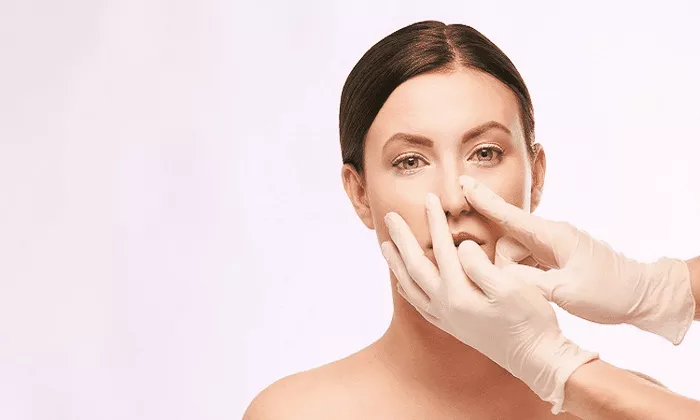Rhinoplasty, commonly known as a nose job, is a popular cosmetic surgery aimed at enhancing the appearance and function of the nose. After undergoing rhinoplasty, patients often have questions about their recovery, including when they can resume their regular activities, such as sleeping on their side. Sleeping position is crucial during the healing process, as it can impact the surgical outcome and overall comfort. In this article, we will explore the factors that affect sleeping positions after rhinoplasty, the ideal sleeping posture during recovery, and the timeline for resuming side sleeping.
Factors Affecting Sleeping Positions after Rhinoplasty
Surgical Technique: The specific surgical technique used during rhinoplasty can influence the level of post-operative swelling and discomfort, which may affect the recommended sleeping position.
Extent of Surgery: The extent of the surgical procedure, whether it is a minor cosmetic adjustment or a more extensive functional correction, can impact the recovery time and the sleeping position recommended by the surgeon.
Individual Healing: Each patient’s healing process is unique, and factors such as age, overall health, and the body’s natural healing ability can influence how quickly they can resume normal activities, including sleeping on their side.
Nasal Packing and Splints: Some patients may require internal nasal packing or external splints during the initial stages of recovery, which can affect their ability to sleep comfortably on their side.
Swelling and Discomfort: Post-operative swelling and discomfort can make certain sleeping positions more challenging in the early days of recovery.
Ideal Sleeping Posture during Rhinoplasty Recovery
In the immediate post-operative period, it is essential to sleep with your head elevated to minimize swelling and promote proper healing. The recommended sleeping position is semi-upright, with the head elevated at a 30 to 45-degree angle. This can be achieved by using multiple pillows or a wedge-shaped pillow.
Sleeping with the head elevated helps reduce fluid accumulation in the nasal tissues, which can contribute to post-operative swelling. Additionally, elevating the head can alleviate pressure on the surgical site, improving overall comfort during the healing process.
Side Sleeping After Rhinoplasty: Timeline and Considerations
Resuming side sleeping after rhinoplasty requires patience and consideration of your body’s healing progress. While each patient’s recovery may differ, the general timeline for resuming side sleeping is as follows:
First Week: During the first week after rhinoplasty, it is crucial to sleep with your head elevated to minimize swelling and avoid placing pressure on the nose. Side sleeping is not recommended during this early stage.
First Two Weeks: In the second week, some patients may start to feel more comfortable sleeping on their side. However, it is essential to consult with your surgeon before changing your sleeping position.
Two to Six Weeks: By the second to sixth week, most patients can gradually resume side sleeping as tolerated. Some may find using a travel pillow or a donut-shaped pillow helpful to provide support and prevent accidental rolling onto the nose.
Six Weeks Onward: By six weeks post-rhinoplasty, many patients can sleep on their side without discomfort. However, individual healing rates can vary, and it is essential to listen to your body and follow your surgeon’s recommendations.
Additional Sleeping Tips for Rhinoplasty Recovery
Avoid Pressure on the Nose: It is crucial to avoid placing any direct pressure on the nose while sleeping, regardless of the sleeping position.
Use Supportive Pillows: Utilize supportive pillows, such as a travel pillow or a donut-shaped pillow, to help maintain a comfortable sleeping position and prevent accidental pressure on the nose.
Avoid Allergy Triggers: Allergens can exacerbate post-operative swelling and congestion. Use allergy-friendly bedding and keep the sleeping area clean and dust-free.
Follow Post-Operative Instructions: Adhere to your surgeon’s post-operative instructions regarding sleeping positions, wound care, and medication use.
Conclusion
Sleeping position is an essential consideration during rhinoplasty recovery to ensure optimal healing and the best surgical outcome. In the immediate post-operative period, sleeping with the head elevated is recommended to minimize swelling and promote proper healing. Side sleeping is generally not advised during the first week to avoid pressure on the nose.
As the healing process progresses, most patients can gradually resume side sleeping, usually by the second to sixth week after rhinoplasty. However, individual healing rates may vary, and it is essential to follow your surgeon’s recommendations and listen to your body during recovery.
Always consult with your surgeon for personalized advice regarding sleeping positions and any other concerns you may have during the rhinoplasty recovery process. With proper care, attention to post-operative instructions, and patience, you can ensure a smooth recovery and enjoy the beautiful results of your rhinoplasty.


